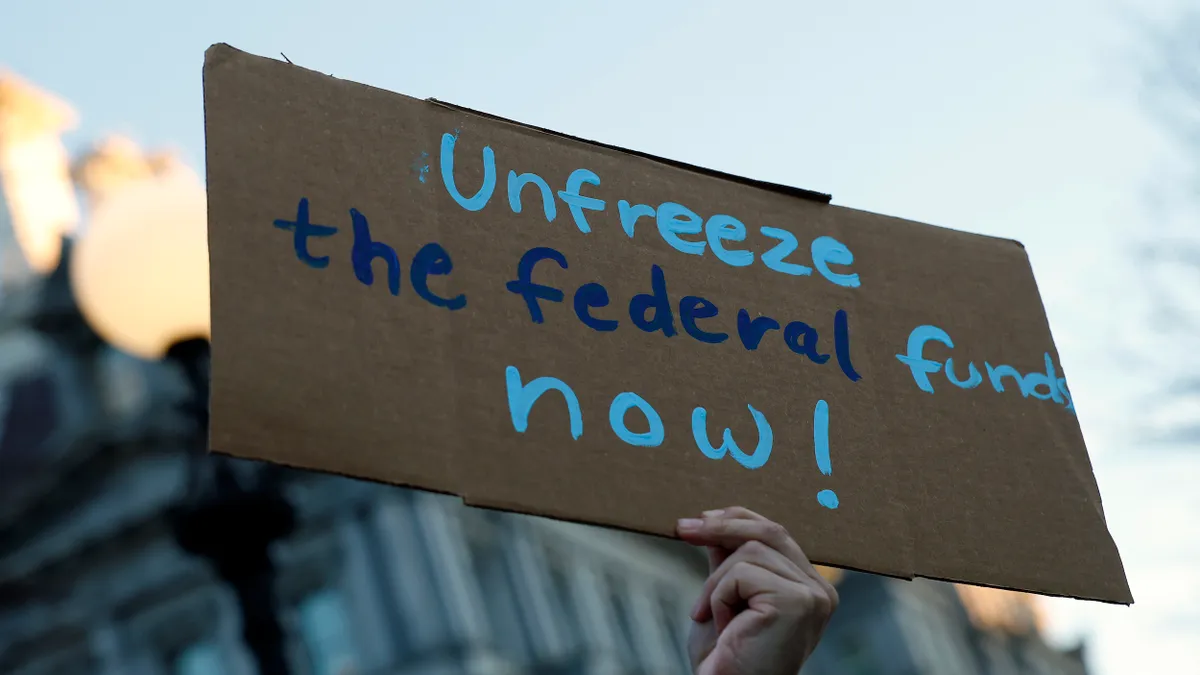Tom Kaleko is a principal and Lucas Peterson is a senior consultant with the municipal advisor team at Baker Tilly, an advisory tax and assurance firm.
More than three years ago, Congress passed the $1.9 trillion American Rescue Plan Act. The package included the Coronavirus State and Local Fiscal Recovery Funds program, or SLFRF, resulting in $350 billion in grants for state and local governments. Recipient communities have made plans for using the funds and begun acting on those plans. If they don’t take certain steps, however, they might have to give the money back to the federal government. Community leaders must act quickly to ensure they obligate the funds by Dec. 31, 2024, in most cases and spend the funds by Dec. 31, 2026, to meet the regulatory requirements.
What is and isn’t an “obligation?”
The U.S. Treasury Department defines “obligation” as an order placed for property and services or entry into a purchase order, contract, subaward and similar transactions that require payment. The easiest way to think of an obligation is a signed legal commitment in which a public sector entity commits itself to pay for something.
Some cities are missing the mark on obligations. A city governing body voting to allocate or earmark funds is not making an obligation. For example, a city council that passed its FY25 budget outlining where it will use SLFRF funds has not obligated that money. It still needs to use one of the contractual mechanisms (a contract or subaward) or place an order for property or services. The project must also comply with certain administrative and legal requirements of the SLFRF program, including meeting required reporting deadlines.
The Treasury Department is now allowing some exceptions to the obligation rule and deadline. It outlines the specific cases that qualify for exceptions in the SLFRF final rule. Recipients may obligate SLFRF money after Dec. 31, 2024, for legal and administrative costs that include meeting requirements for reporting and compliance, record retention and internal controls, environmental compliance, civil rights and nondiscrimination, as well as for single audit costs and property standards. This includes in-house staff time and consultant or contractor expenses relating to those administrative costs.
To take advantage of these exceptions, cities must follow a four-step process which includes estimating the amount needed, justifying that amount, reporting the estimate to the Treasury Department by specific deadlines and detailing the final amount spent at award closeout.
Note that the Dec. 31 obligation deadline only applies to the local government recipient of SLFRF funds from the federal government. Subrecipients and contractors do not need to take additional steps to obligate funds they receive via a subaward or contract with the original recipient.
Obligating future payroll expenses
Cities need to be careful about considering payroll expenses as an obligation. The Treasury Department will consider a recipient to have incurred an obligation to use funds to cover personnel costs for an employee through Dec. 31, 2026 — if the employee is serving in a position that was established and filled before Dec. 31, 2024. To be eligible, the personnel costs must be covered in connection with an eligible use of SLFRF. For example, this could include city employees developing broadband projects or county employees overseeing contracts to build affordable housing. Eligible personnel costs include salaries and wages, covered benefits (such as leave and insurance) and payroll taxes.
If an SLFRF-funded position was established before Dec. 31, 2024, a recipient may replace the employee in that position, and that replacement does not need to be immediate.
Recipients may also reorganize positions within the scope of an eligible SLFRF project after Dec. 31, 2024. FAQs on the final rule give this example: If an eligible project employs 10 job training specialists on Dec. 31, 2024, and one of those training specialists is promoted to a supervisory role, the project can continue to use SLFRF funds for that person as long as the funds continue to cover no more than 10 positions total.
Similarly, if payroll costs are lower than estimated, a recipient may expend the money for another eligible use of SLFRF funds. For example, if a recipient submitted a report to Treasury estimating $5 million in SLFRF payroll costs in 2025 and 2026, but the project is completed ahead of schedule and only $4 million is needed for payroll expenses, the recipient may reallocate the leftover $1 million for another eligible use of SLFRF funds. Of course, the project must meet all the other requirements, including the obligation deadline of Dec. 31, 2024.
Interagency agreements and MOUs
In some cases, interagency agreements and memoranda of understanding and memoranda of agreement may be considered an obligation if they impose conditions on fund usage, specify eligible uses or govern the procurement of goods or services between government entities. To be considered SLFRF obligations, IAAs, MOUs and MOAs must specify the scope of work and project deliverables, and the agreements must be signed and dated by all involved parties, thus creating a binding obligation. The agreements also must be finalized by Dec. 31, 2024, and used to obligate funds a government agency will expend in 2025 and 2026.
An existing MOU can be used to obligate SLFRF funds if it fits the criteria. For example, a county board that has an existing MOU in place to provide social services to several cities within its jurisdiction might be able to use SLFRF to cover program costs in 2025 and 2026 if the MOU has a clear scope of work and creates clear conditions for compliance with SLFRF program requirements for those cities. The MOU must meet the requirements described above, have been entered into on or after March 3, 2021, and provide services that are SLFRF-eligible expenses.
Act quickly but carefully
If they don’t obligate the funds properly, local governments risk having to return money they thought they could spend. In some cases, municipalities have erroneously thought something was obligated. In other cases, they signed agreements with contractors to execute an SLFRF project, but the contractor went out of business or no longer can accommodate the SLFRF work. Cities also need to be careful about creating long-term liabilities that exceed their SLFRF award in their eagerness to obligate funds.
The SLFRF program’s rules and compliance requirements can be daunting. In some cases, it makes sense to hire a consulting firm that specializes in helping public sector entities identify missed opportunities. These professionals specialize in identifying ways to obligate ARPA funds and can help recipients meet compliance and reporting requirements.
ARPA reporting requirements are not a bad thing — they support transparency, responsibility, and equity in the use of these vital resources. But cities must act to meet the requirements — or get help doing so — before it’s too late.



















